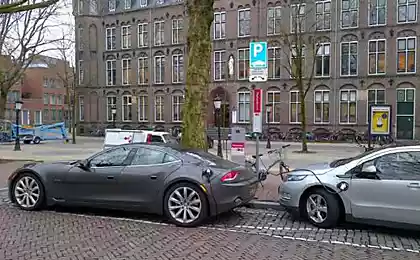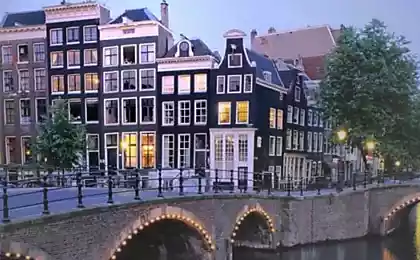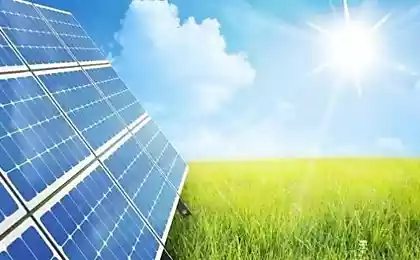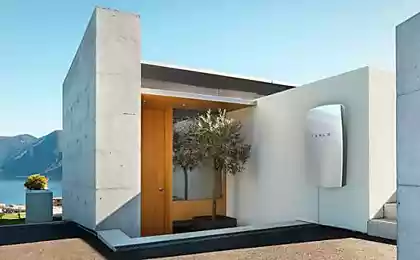402
Solar panels as noise barriers in the Netherlands
On the highway near the small town of ' s-Hertogenbosch, Netherlands, tested a new form of solar technology for the solution of typical urban problems: a noise barrier.

Anti-noise screen is used to attenuate loud sounds of traffic to neighborhoods and businesses located along busy roads, it can improve the quality of life for those whose homes are near roads, but such barriers occupy a lot of space and may not fit in with the surrounding landscape.
Engineers from the technical University of Eindhoven came up with a solution which makes the barriers an attractive part of the landscape, as well as a source of clean energy. The technology behind these new solar noise barriers is called luminescent solar concentrators (LSCS).
"These "luminescent solar concentrators" (LSCS) will receive sunlight and direct it to the panels. There, he's going to concentrated form tradicionalmente batteries. With a variety of colors LSC visually very attractive, making them ideal for use in a variety of situations in an artificial environment," explains Michael Debije (Michael Debije) researcher Department of chemical engineering and chemistry, who for several years worked on the research of these panels.
"An additional advantage is that the used principle implies low cost, they can be produced in any desired color, they are quite durable and LSCS will work even when the sky is covered with clouds. This means a huge potential."
Practical test, which will last one year, started on 18 June in ' s-Hertogenbosch, it is headed by construction company Heijmans. The researchers intend to assess the feasibility of electricity generation using solar panels combined in a noise-absorbing barriers or different, SONOBs (solar noise barriers).
Such an experiment in the Netherlands is the first of its kind, when the practical test is conducted in real life. The aim is to provide a better understanding of how much electricity a translucent acoustic screens can generate under different conditions. Aspects such as resistance to vandalism and maintenance are also part of the test. Testing in an open area will allow researchers to obtain valuable data that they otherwise would not be able to obtain in the laboratory.
Sound-absorbing barriers that are used in the practical test, have a width of 5 meters and a height of 4.5 m, as well as LSC, contain a translucent panel, which upheld the classical solar cells, for comparison of performance.
First results show that 1 km solar noise barriers can produce enough electricity to power 50 households.
"The Netherlands has a sufficient number of noise barriers, we can also provide the necessary solar technology," says Stein Verkuilen (Stijn Verkuilen), project Manager at Heijmans. "Our practical test this is a simple example through which we learn how solar technologies can be integrated durable and visually appealing way." published
P. S. And remember, just changing your mind — together we change the world! ©
Source: www.facepla.net/the-news/tech-news-mnu/5121-солнечные-панели-шумопоглощающие.html

Anti-noise screen is used to attenuate loud sounds of traffic to neighborhoods and businesses located along busy roads, it can improve the quality of life for those whose homes are near roads, but such barriers occupy a lot of space and may not fit in with the surrounding landscape.
Engineers from the technical University of Eindhoven came up with a solution which makes the barriers an attractive part of the landscape, as well as a source of clean energy. The technology behind these new solar noise barriers is called luminescent solar concentrators (LSCS).
"These "luminescent solar concentrators" (LSCS) will receive sunlight and direct it to the panels. There, he's going to concentrated form tradicionalmente batteries. With a variety of colors LSC visually very attractive, making them ideal for use in a variety of situations in an artificial environment," explains Michael Debije (Michael Debije) researcher Department of chemical engineering and chemistry, who for several years worked on the research of these panels.
"An additional advantage is that the used principle implies low cost, they can be produced in any desired color, they are quite durable and LSCS will work even when the sky is covered with clouds. This means a huge potential."
Practical test, which will last one year, started on 18 June in ' s-Hertogenbosch, it is headed by construction company Heijmans. The researchers intend to assess the feasibility of electricity generation using solar panels combined in a noise-absorbing barriers or different, SONOBs (solar noise barriers).
Such an experiment in the Netherlands is the first of its kind, when the practical test is conducted in real life. The aim is to provide a better understanding of how much electricity a translucent acoustic screens can generate under different conditions. Aspects such as resistance to vandalism and maintenance are also part of the test. Testing in an open area will allow researchers to obtain valuable data that they otherwise would not be able to obtain in the laboratory.
Sound-absorbing barriers that are used in the practical test, have a width of 5 meters and a height of 4.5 m, as well as LSC, contain a translucent panel, which upheld the classical solar cells, for comparison of performance.
First results show that 1 km solar noise barriers can produce enough electricity to power 50 households.
"The Netherlands has a sufficient number of noise barriers, we can also provide the necessary solar technology," says Stein Verkuilen (Stijn Verkuilen), project Manager at Heijmans. "Our practical test this is a simple example through which we learn how solar technologies can be integrated durable and visually appealing way." published
P. S. And remember, just changing your mind — together we change the world! ©
Source: www.facepla.net/the-news/tech-news-mnu/5121-солнечные-панели-шумопоглощающие.html























